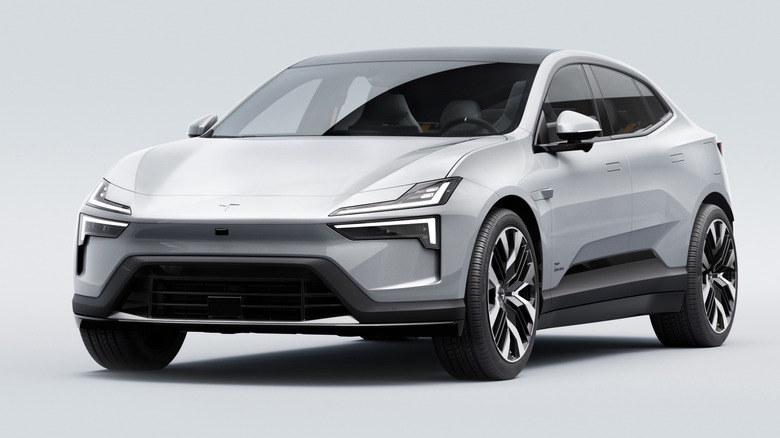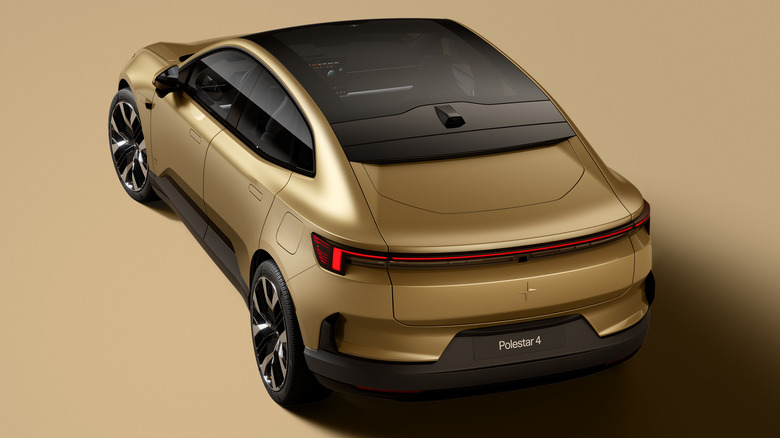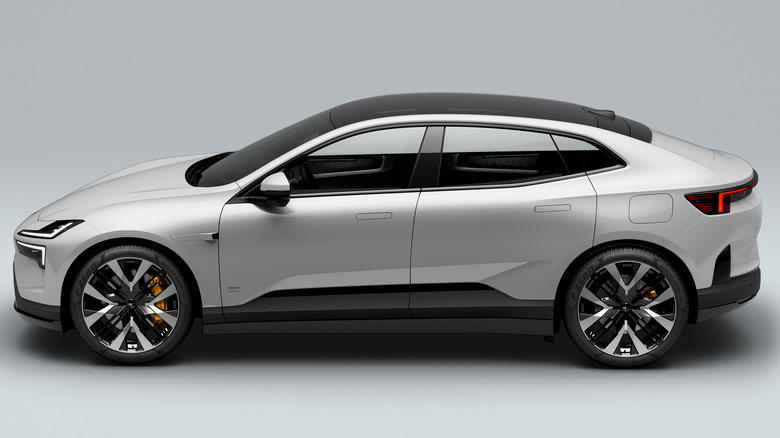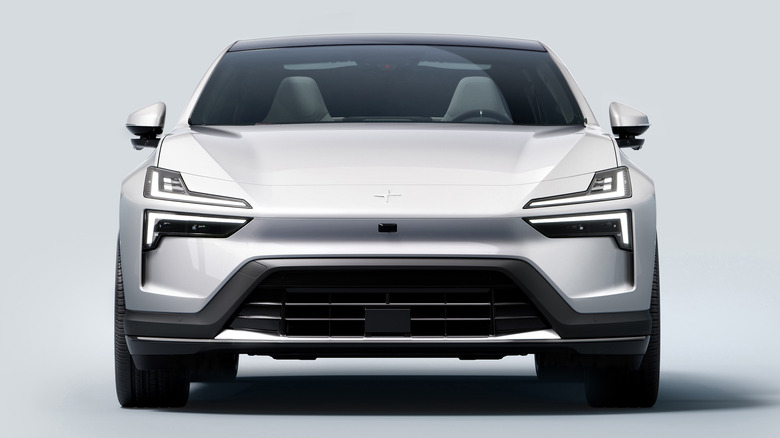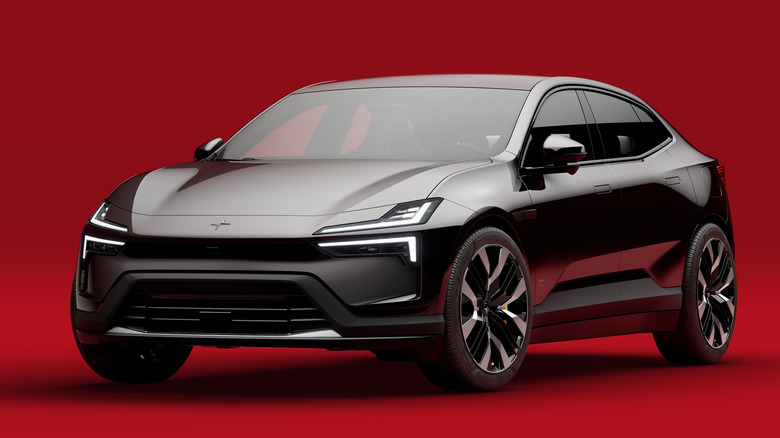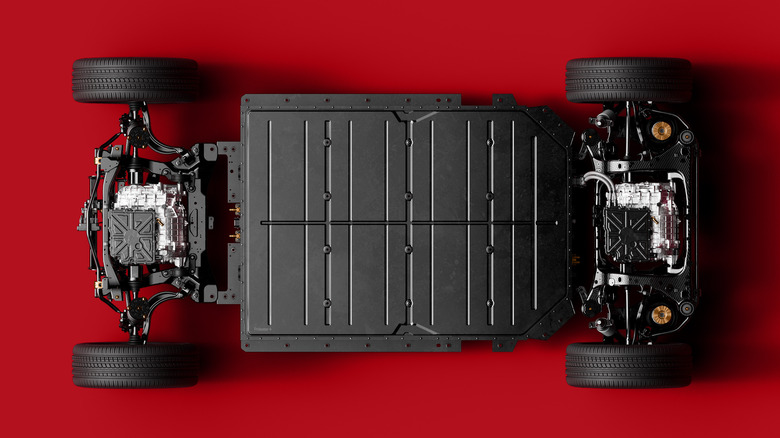Five Ways The Polestar 4 Surprised Us
The Polestar 4 has been fully revealed, after no small amount of teasing and promises, but nothing quite prepared us for some of the more controversial decisions the electric automaker made in designing its next new car. If you were to pick one word to describe the overall design language on the car, "different" might come to mind. That's not necessarily a criticism, as the car isn't objectively terrible to look at — quite the opposite, in fact.
It's somewhere between SUV and sedan (Polestar calls it an SUV coupe) and firmly follows Polestar's automotive design language of classic Scandinavian minimalism, but there are definitely a few design choices that are a little less than conventional.
Polestar's lineup is small, and its history after splitting from Volvo is relatively short. Before now, only two models were actually offered, the Polestar 2 sedan, and the Polestar 3 SUV which will arrive on roads later this year. Despite possessing a numerically higher number, the Polestar 4 fits right in the middle of the brand's lineup.
There's no rear window
The big obfuscating elephant in the room is that rear window, or lack thereof. Numerous midengine supercars have lacked conventional rear windows for decades, and cargo vans used by contractors often don't have any glass in the rear door. For both of those types of vehicle, it's often out of necessity. The engine in a supercar — and its necessary accoutrements — may block your view out of the back of the car, eliminating the need for glass, while in the cargo van's case, no contractor wants a piece of wood or pipe ejecting itself through the window and out of the back of the car. In the case of the Polestar 4, though, it's purely a design choice.
The design for the rear of the new EV was inspired by the Polestar Precept, which also lacked a conventional rear window. Now, that's coming to market. "With Polestar Precept we previewed a stunning new occupant experience by removing the rear window and pushing the rear header, which plays an integral safety role, further back," Maximilian Missoni, Polestar Design Head, said in a statement. "This means that now, rear occupants can have a unique experience in our SUV coupé."
You will still be able to see out of the back through a large screen that takes place of the rearview mirror. Polestar says it will display to drivers a wider view behind them than they are used to in a conventionally designed car.
Its size and shape are unexpected
At 190 inches long, the Polestar 4 is roughly three inches longer than a Tesla Model Y, another EV with a somewhat hard to define shape. And, at a little over 60 inches tall, it's four inches shorter than the Tesla. The Polestar 4's overall size is a surprising part of the EV's debut. It's neither huge and imposing like the GMC Hummer EV, nor small or compact like a Chevy Bolt. Yet, compare it to a definite EV crossover like the Cadillac Lyriq, and it's a good deal smaller.
Much like the rest of the car, it's a little hard to classify. Not quite as big as a regular crossover, and not as small as a hatchback. The design is assured of itself so it's not a rolling existential crisis like the Tesla Model Y may be, and yet it's not staying in its lane with a definable shape like the Ford F-150 Lightning. Either by turning heads or causing people to scratch their heads, the Polestar 4's overall design will have people pondering for at least a few months.
A price out of line with expectations
The Polestar 4 isn't egregiously expensive like a lot of EVs, yet it's not a budget model in the slightest. At a launch price of around $60,000, it's firmly in the middle of other EV offerings (you may sense a theme here). It's also positioned right between the $48,400 base price of the Polestar 2 and the $83,900 MSRP of the base model Polestar 3, despite the fact that many expected this "SUV coupé" to command a premium over existing models. It's not yet known how much the various future performance and interior upgrades will add to the final price people will actually see.
For comparison, the "Performance Pack" on the Polestar 3 adds $6,000 to the price tag. For the Polestar 2, adding an entire motor and shaving a full 2.5 seconds off the 0-60 miles per hour time adds $3,500 to the MSRP.
The base price puts it more in line with a 2023 Ford Mustang Mach-E GT. That car retails for $63,995. The Tesla Model Y Performance is also in the general ballpark, at $56,990. The price might be the least perplexing aspect of the entire enigma that is the Polestar 4.
Performance to give Polestar a new flagship
Philosophical ponderings about the classifications of automobiles aside, the Polestar 4 is fast. In fact, it is currently the fastest vehicle wearing a Polestar badge. It will accomplish the all-important zero to 60 miles per hour haul in 3.8 seconds. It's a full seven tenths of a second faster than the dual-motor Polestar 2, which equates to an eternity in terms of speed. For completeness sake, the Polestar 3 Performance Pack should accomplish the same feat in 4.6 seconds.
However, the Polestar 4 is not the king of performance among other almost SUV EVs. The Ford Mustang Mach-E GT boasts a 3.8 second highway speed time, and the Tesla Model Y Performance clocks in at 3.5 seconds. It's not quite a performance monster, then, but it's absolutely no slouch. No one is going to argue that the 544 horsepower combined output from both of its permanent magnet motors is exactly underpowered.
Two versions with some significant differences
The Polestar 4 will be offered in a variety of flavors. If you're shopping for an EV efficiency in mind, the longest range version of the Polestar 4 is equipped with a single 272 horsepower motor in the rear, and Polestar is estimating it will go up to 300 miles on a charge based on the U.S. EPA's test cycle. That's fairly impressive, for a car of its size: the longest range Model Y has an estimated range of 330 miles, for example.
If you opt for more performance, mind, faster dual motor Polestar 4 has an estimated range of up to 270 miles, the automaker says, with the deactivate the front electric motor when not required helping coax out a little more mileage.
Range isn't the only consideration, however; in fact, the differences between the base model and the highest trim of the Polestar 4 are so considerable, they're almost different cars. The Dual Motor Performance Pack not only benefits from the addition of an extra motor, but the brakes have been upgraded to Brembo 4-piston calipers, and its given a set of 22 inch wheels. If that wasn't enough of a difference, the active suspension system is unique to the dual-motor models, and the Performance Pack throws in the additional treat of having a tuned chassis. How that will hold up on the road, we'll have to wait until deliveries of the Polestar 4 begin in the U.S. come 2024.
